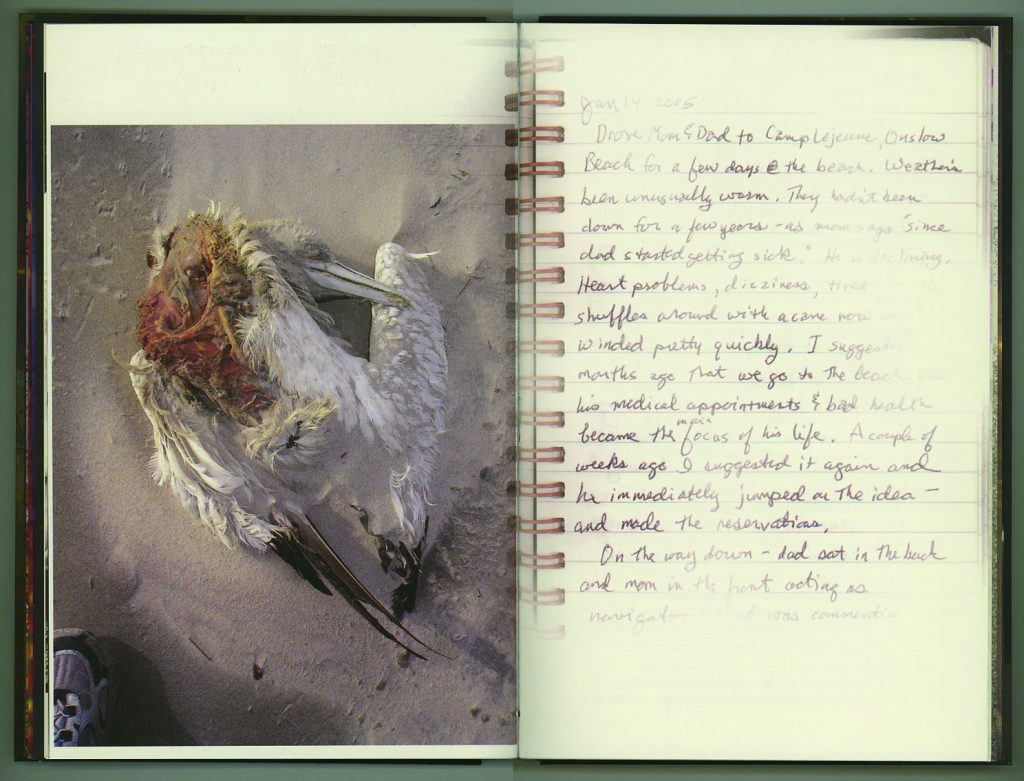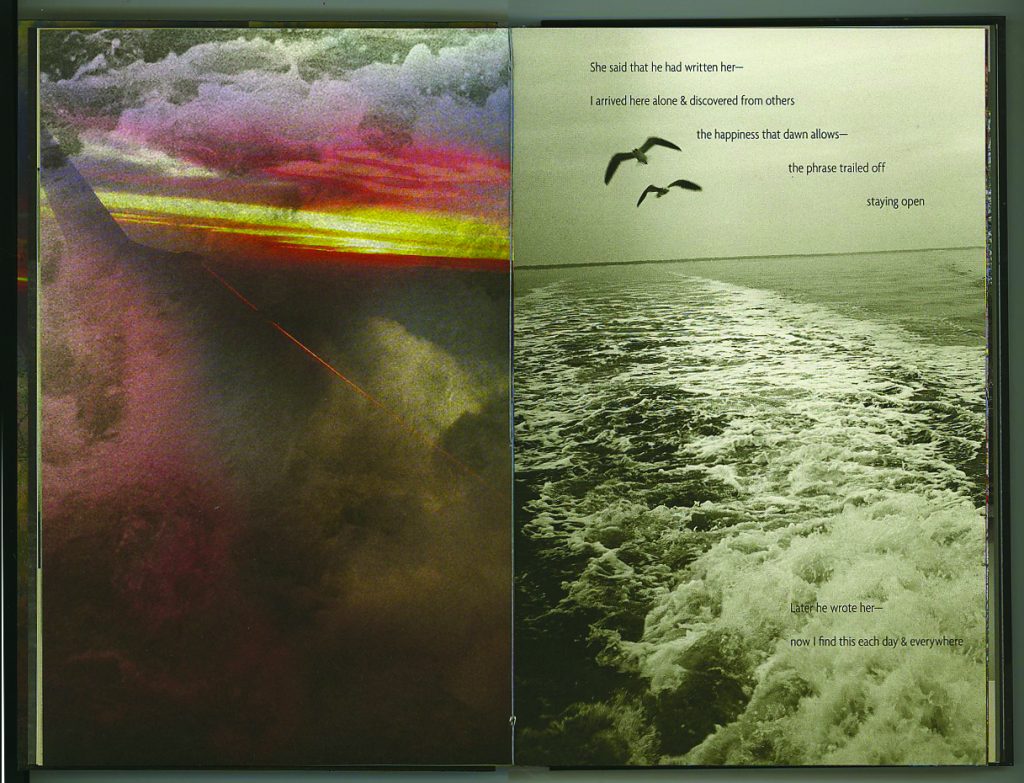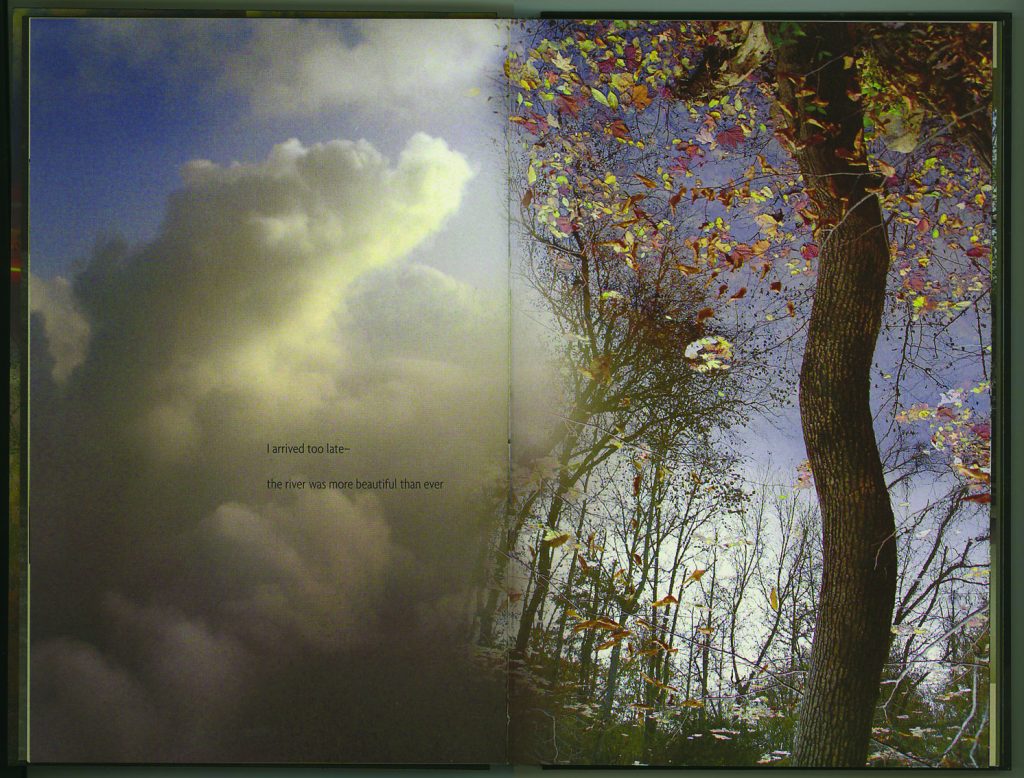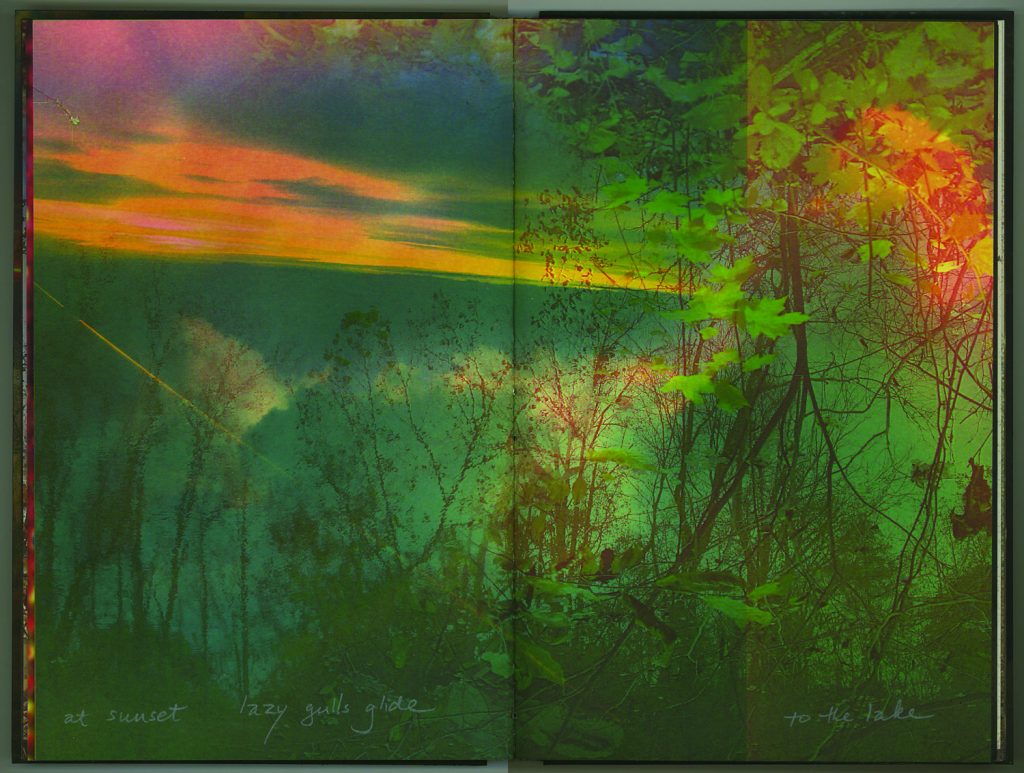
Pages 72-73.
Brad Freeman
Chicago, Illinois
http://www.bradfreemanbooks.com/
Wrong Size Fits All
2010
Photographs, writing, design, digital collage, printing, and binding
Offset printed artist’s book
edition size of 200
112 pages
6 x 9 x .75”
8 3/4” x 5 3/4”
Artist Statement
As an artist I make books to present a lot of stuff in a very small package. As a printer I can make many copies of a single book. Within a book, artists can explore many facets of an issue over time. Complexity and resonance can build as the pages are turned. A single image exists within the context of what happened before and implies what might occur on future pages. Because they exist as portable multiples, the books become traveling exhibitions. Over its lifetime a book can insinuate itself into unforeseen locales.
Wrong Size Fits All
The title is a play on words from the expression ‘one size fits all’ and the implication is that nothing is perfect, that in life there is always some unexpected issue that presents itself to change things.
What is the book about? It’s about a lot things but basically about the deaths of my sister and dad within a two year period. One of the joys of my life was to visit my sister, who had been a great influence on me as is reflected at the beginning of chapter one. The book, through the brief poetic writing, does not refer specifically to her death rather to the feelings I experienced thinking of her and how she influenced me.
The chapters’ beginnings and endings are determined by the signatures. In other words, chapter one is the first signature, etc. The conceptual leaps between the chapters, rather than being subtle segues, reflect the abrupt changes in thoughts that we have that are sometimes incomprehensible at first.
One thing that the writing about my dad is meant to convey was my inability to come to terms in a sympathetic way to his decline.
During the printing I used the specific creative potential of offset lithography to make some of the images. In other words a lot of the images were created by various combinatory and chance operations while printing, while I maintained strict curatorial control. I am inspired by the layering and flow and structure of music and tried to reflect this in the dense layering of imagery that occurs in the book.
I chose the exposed spine binding because it allows the pages to lie as flat as possible. The book should be placed on a table for viewing, rather than held up in the hands.





